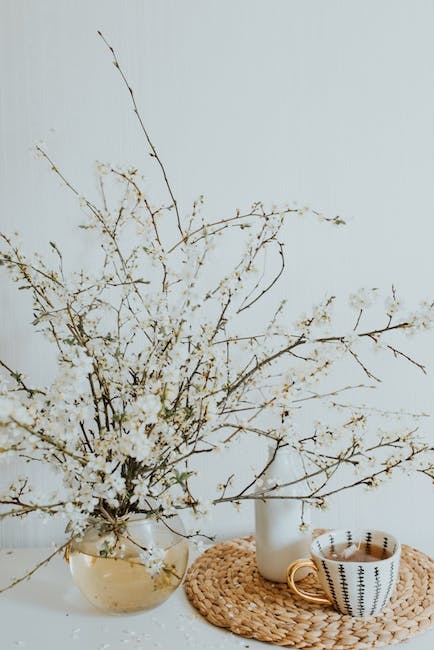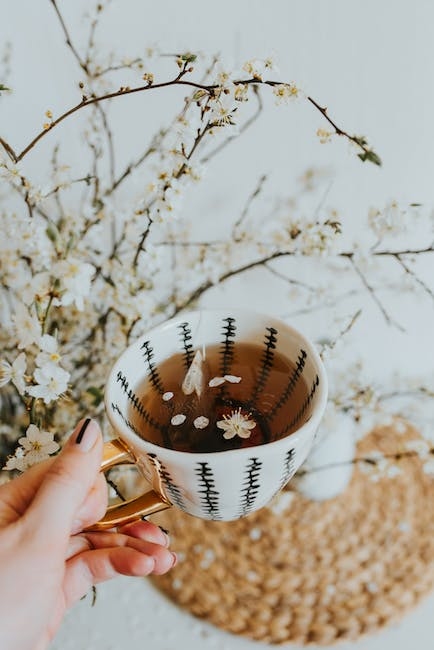Discovering the World of Oolong Tea: A Guide to Flavors and Regions
Oolong tea is a beloved tea variety that sits somewhere between green and black tea in terms of processing. It is partially oxidized, which means it has a unique flavor profile that ranges from light and floral to bold and rich. In this article, we’ll explore the different types of oolong tea and the regions that produce them.
Types of Oolong Tea
The level of oxidation determines the flavor and color of the tea. Lighter oolongs, which are less oxidized, have a floral and fruity taste. Darker oolongs, on the other hand, have a more roasted and earthy flavor. Here are some of the most popular types of oolong tea:
Light Oolong Tea
Light oolong teas are known for their delicate and nuanced flavors. Here are some examples of light oolong teas:
- Tie Guan Yin
- Da Hong Pao
- Ali Shan
Medium Oolong Tea
Medium oolongs have a more balanced flavor profile between light and dark oolongs. Here are some examples of medium oolong teas:
- Wu Yi Rock tea
- Phoenix Dan Cong
Dark Oolong Tea
Dark oolongs, also known as black dragon tea, have a rich and bold taste, with notes of caramel and chocolate. Here are some examples of dark oolong teas:
- Wuyi Yancha
- Oriental Beauty
Regions That Produce Oolong Tea
Oolong tea can be classified into different regions, with each region producing its own unique flavor and aroma.
Taiwan
Taiwan is known for producing some of the finest oolong teas in the world. The climate and soil in Taiwan are ideal for growing tea, and the tea farmers there use traditional methods to create a unique flavor profile. Some of the most popular Taiwanese oolong teas include:
- Tie Guan Yin (Iron Goddess of Mercy)
- Dong Ding (Frozen Summit)
- Alishan (Mount Ali)
China
China is the birthplace of oolong tea, and it has been producing oolongs for centuries. The different regions in China produce oolongs with distinct flavor profiles. Here are some popular Chinese oolongs:
- Wu Yi Rock tea
- Dan Cong (Phoenix Single Bush)
- Tie Guan Yin (Iron Goddess of Mercy)
Fujian
Fujian is a province in China that is known for its oolong teas. The tea from this region has a unique flavor profile that is influenced by the local climate and soil. Some popular Fujian oolongs include:
- Da Hong Pao (Big Red Robe)
- Tie Guan Yin (Iron Goddess of Mercy)
- Bai Hao (Oriental Beauty)
Conclusion
Oolong tea is a fascinating and complex tea variety that is appreciated by tea lovers around the world. The different types of oolong tea and the regions that produce them offer a wide variety of flavors and aromas to explore. Whether you prefer a light and floral oolong or a bold and rich one, there is an oolong tea out there that will suit your taste buds.
Brewing the Perfect Cup of Oolong Tea: Tips and Techniques
Oolong tea is a delicate and nuanced tea that requires careful brewing techniques to fully bring out its flavor and aroma. If you’re new to oolong tea or looking to enhance your brewing skills, keep reading for some tips and techniques to brew the perfect cup of oolong tea.
Water Temperature
The water temperature for brewing oolong tea should be between 180-200F (82-93C), depending on the type of oolong tea. To ensure that you have the perfect water temperature, boil water and allow it to cool for a few minutes before steeping your tea.
Steeping Time
Steeping time varies between oolong teas, but generally, the first infusion should be around 2-3 minutes, with subsequent infusions increasing in time. High-quality oolong teas can be steeped multiple times, with each infusion revealing different nuances of flavor.
Tea Leaves to Water Ratio
It’s important to use the correct ratio of tea leaves to water, which is typically 1-2 teaspoons of loose leaf oolong tea per 8 ounces of water. Adjust the ratio according to your personal taste preferences and the strength of the tea you prefer.
Brewing Methods
Oolong tea can be brewed using various brewing methods, including a traditional gaiwan, a teapot, or a tea infuser. Experiment with different methods to find what works best for you and your preferred oolong tea.

Leaf Preparation
The way oolong tea leaves are prepared can also affect the brewing process, such as whether they are tightly rolled or loosely rolled. Pay attention to the shape of your tea leaves and adjust your brewing technique accordingly.
Geography and Climate
The brewing process can also be influenced by the altitude, climate, and soil conditions where the tea leaves were grown. Consider the origin of your oolong tea and how it may affect the brewing process.
By following these tips and techniques, you can brew the perfect cup of oolong tea and fully appreciate its delicate flavor and aroma. Happy sipping!
The Amazing Health Benefits of Oolong Tea
Are you looking for a natural and healthy way to lose weight, boost your energy levels, and improve your overall health? Look no further than oolong tea! This delicious and versatile beverage has been used for centuries in traditional Chinese medicine to treat a variety of ailments and promote wellness. Here are just a few of the many health benefits of oolong tea:
1. Weight Loss
One of the most well-known benefits of oolong tea is its ability to aid in weight loss. Studies have shown that oolong tea can increase metabolism and burn fat, thanks to its caffeine and catechin content. Caffeine is a natural stimulant that can help boost energy levels and improve fat oxidation, while catechins have been shown to have a thermogenic effect, meaning they can help the body burn more calories.
2. Blood Sugar Regulation
For people with diabetes or at risk for developing the condition, oolong tea may be particularly beneficial. Some studies have suggested that oolong tea can help regulate blood sugar levels, potentially reducing the risk of complications associated with high blood sugar. This effect is likely due to the presence of polyphenols in the tea, which can help improve insulin sensitivity and glucose uptake in the body.
3. Heart Health
Another benefit of oolong tea is its potential to improve heart health. Research has shown that drinking oolong tea may help reduce cholesterol levels and lower blood pressure, both of which are risk factors for heart disease. The antioxidants in the tea may also help prevent the buildup of plaque in the arteries, which can lead to heart attacks and strokes.
4. Anti-Inflammatory Properties
Oolong tea has also been shown to have anti-inflammatory properties, which may help reduce the risk of chronic diseases such as cancer and arthritis. Inflammation is thought to play a role in the development of many diseases, and reducing inflammation in the body can have numerous health benefits. The polyphenols in oolong tea are thought to be responsible for this anti-inflammatory effect.
5. Improved Mental Function
Finally, oolong tea may also have benefits for mental function and well-being. The caffeine in the tea can help improve mental alertness and cognitive function, making it a great choice for a mid-afternoon pick-me-up. Additionally, oolong tea may have a calming effect on the body, reducing stress and anxiety levels.
How to Enjoy Oolong Tea
Now that you know about the many health benefits of oolong tea, you may be wondering how to incorporate it into your daily routine. Here are a few tips:
- Choose a high-quality oolong tea that is fresh and fragrant.
- Steep the tea for 3-5 minutes in hot water, depending on your preferences.
- Enjoy oolong tea hot or cold, with or without sweeteners or milk.
- Experiment with different flavors and blends to find your favorite.
Whether you are looking to boost your metabolism, improve your heart health, or simply enjoy a delicious and healthy beverage, oolong tea is a great choice. Try it out for yourself and experience the many benefits of this amazing tea!
Discovering the Versatility of Oolong Tea Pairing and Recipes
Are you a tea enthusiast looking for a new taste adventure? Look no further than oolong tea, a unique and versatile tea that can be paired with a variety of foods and ingredients. In this blog post, we’ll explore some popular pairings, cooking and baking recipes, and traditional oolong tea recipes to expand your tea experience.
Pairing Oolong Tea with Different Foods
One of the unique qualities of oolong tea is its taste profile, which makes it a perfect pairing for a wide range of foods. Some of the most popular pairings include:
- Fruits like peaches, apricots, and berries
- Chocolate or other desserts
- Seafood and light meats like chicken or pork
- Spicy or savory dishes like Indian or Thai cuisine
Experiment with different pairings to find your perfect match.
Using Oolong Tea in Cooking and Baking
Did you know that oolong tea can also be used as an ingredient in cooking and baking? Try using it to infuse flavor into sauces, marinades, or baked goods like cakes and cookies.
Traditional Oolong Tea Recipes
Some traditional oolong tea recipes include:
- Milk oolong tea latte
- Oolong tea jelly
- Oolong tea eggs (a Chinese snack where hard-boiled eggs are steeped in oolong tea and spices)
These recipes are a great way to explore the unique taste of oolong tea.
Enjoying Oolong Tea on Its Own
Of course, oolong tea can also be enjoyed on its own. Many oolong tea enthusiasts recommend savoring its complex flavors and aromas, and paying attention to the tea’s brewing parameters like water temperature and steeping time to fully appreciate its taste.
So, whether you’re looking for a new tea pairing or a way to incorporate oolong tea into your cooking and baking, there are many ways to enjoy the versatility of this unique tea. Happy sipping!


Leave a Reply